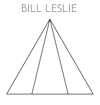Boris Groys talking about art criticism...
They [readers] absolutely didn’t respond to what I wrote, be it description or evaluation, and they absolutely couldn’t distinguish between positive and negative evaluation. So if they saw, for example, a long text with illustrations on the first page, and it was a negative review, everybody perceived it as a positive review.
If you mention them [artists] it makes no sense to criticise them, because it’s obvious that whatever you say is an advertisement for them. If you don’t like them, you just don’t mention them; if you like them, you just approve them. So the system excludes the phenomenon of negative appreciation: something that has a very long tradition… So today’s criticism mostly does not function as critique.
A critic creates a search engine for the reader; fundamentally he just says ‘look at this!’ Whatever is said beyond this will be perceived merely as an explanation or legitimization of the advice to look.
Interview with Boris Groys, Frieze 121
Is this an attitude of an art world dominated by the market? Of consumer consciousness, where time is short and not to be wasted? Where going to see something becomes a question of 'is it worth my time, do I need to see this?' Rather than a general or genuine curiosity to experience and form opinions about cultural stuff (I nearly wrote products, which perhaps betrays the way in with which current language use is bound to consumerism.)There is an expectation here that the critic will do the work for the gallery goer, somethign like a personal shopper. Letting them know what they should go and see and what they should miss. The reader/viewer is thereofore, not in the position to make decisions for themselves. That is not what is expected of the art encounter.
As an artist then, getting 'into' an art magazine or journal is all important (and this is the same with having shows at 'recognised' galleries and the like). Getting mentioned and the exposure it brings is constitutive of your status as artist within the economy of the visible artworld. Without this representation (from galleries and critics) you effectively do not exist. In this sense, the critic can do nothing but reinforce the dynamic. And because the value of the writing, what is visible about it, is quantitive rather than qualitative (ie. more about column inches and jpeg dimentions than about the critical analysis itself.) The engagement between critic and artist becomes much the same as between critic and viewer and presumably artist and viewer. These relationships become based on quantitive values, with a presumption that art can be easily valued, more in terms of its visiblilty (as an object within a system of comercial relations), than as an object of interest within itself, or within a meaningful, personal and individual encounter.
Negative appreciation (deppreciation?)would only be possible if the critic had nothing invested in this dynamic. But how can their writing be divorced from this context? As Groys says, if it appears in an art magazine it will not really be 'read'. But if the writing is taken out of this context it will lose its visibility, no one will read it. So the critic, like the artist, is caught in a bind. Within the 'professional' world the output of both writer and artist is reduced merely to its visibilty, its position within the field. The possibilities of what the art or writing can do is radically reduced. All it can do, in fact, is take a position. They are visible, but silent.
Basically, what's the fucking point right?
Subscribe to:
Post Comments (Atom)











No comments:
Post a Comment